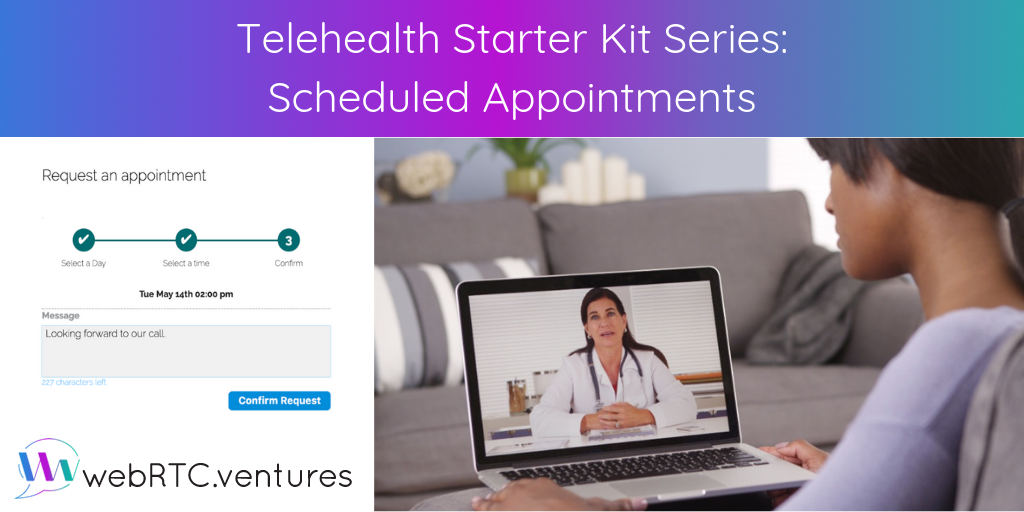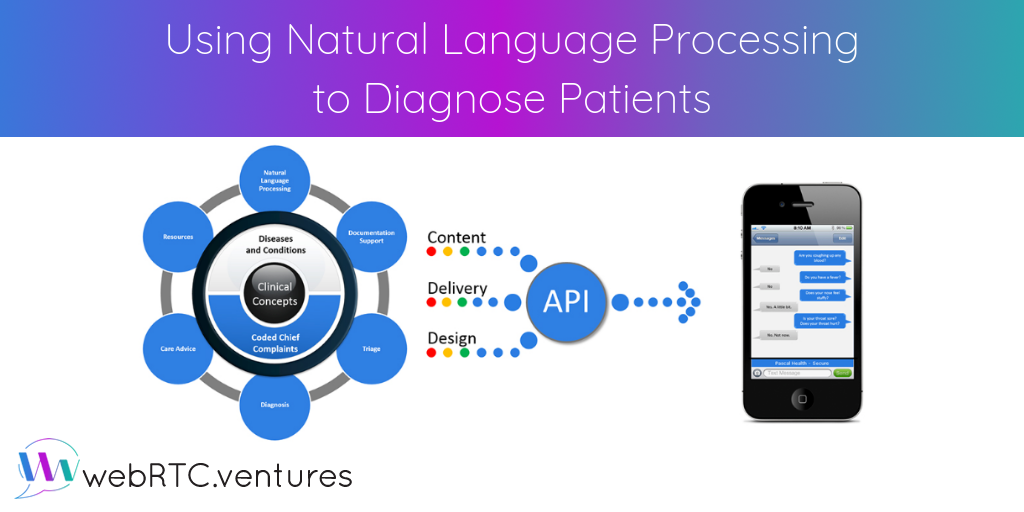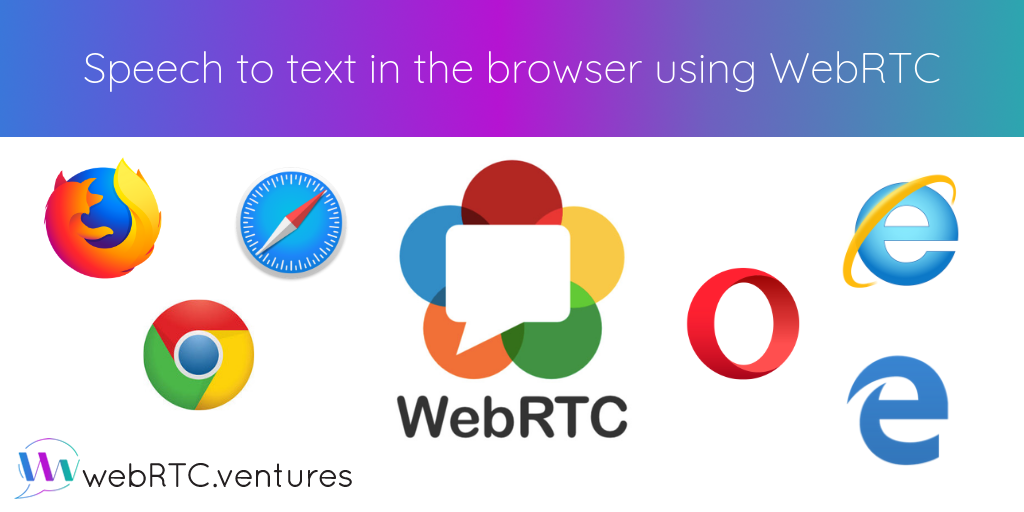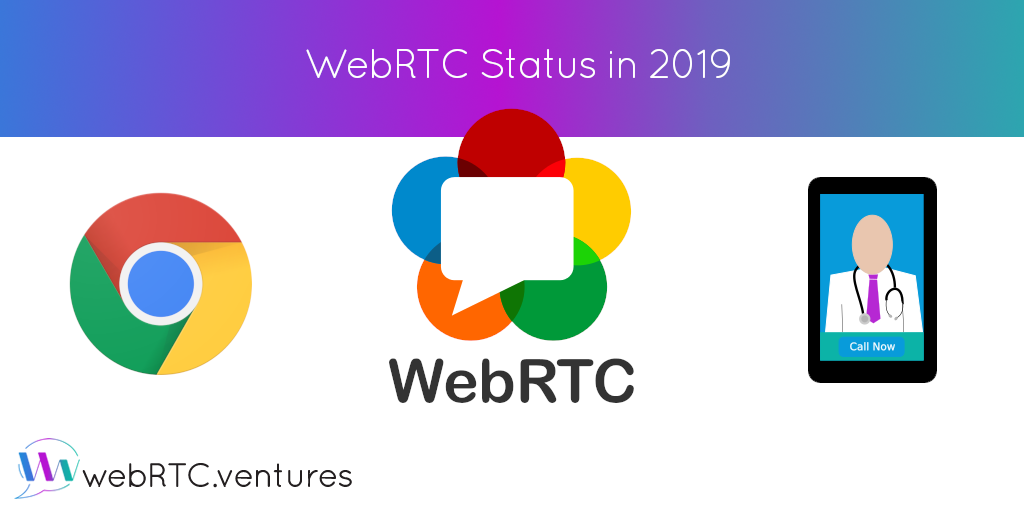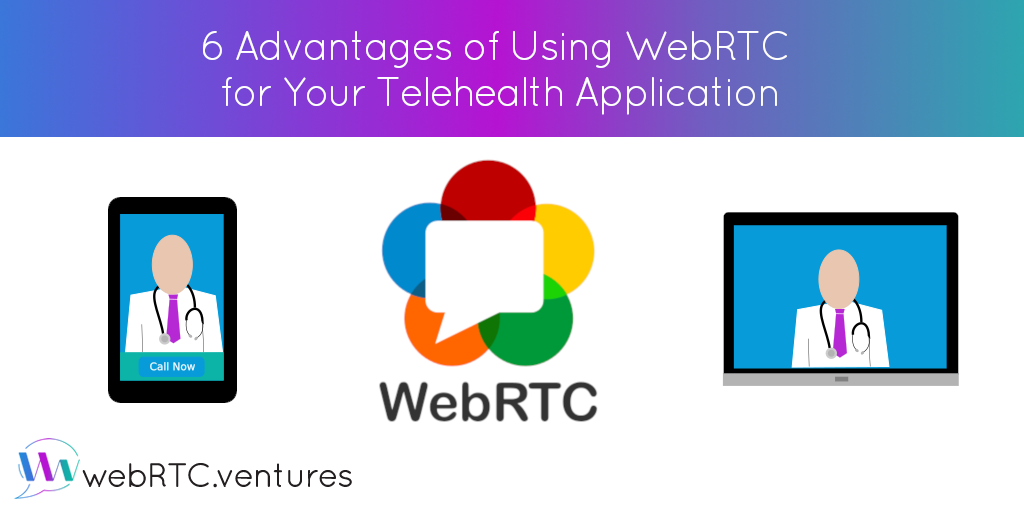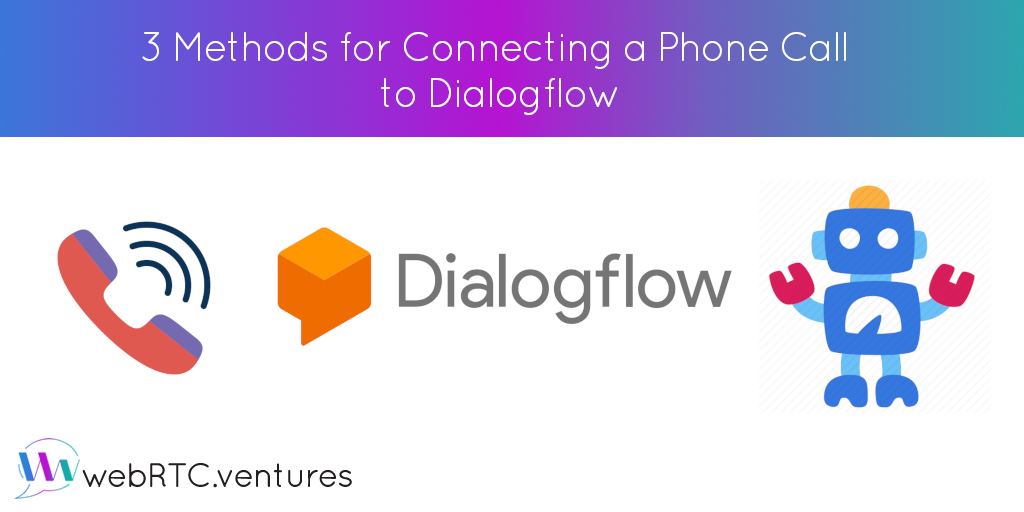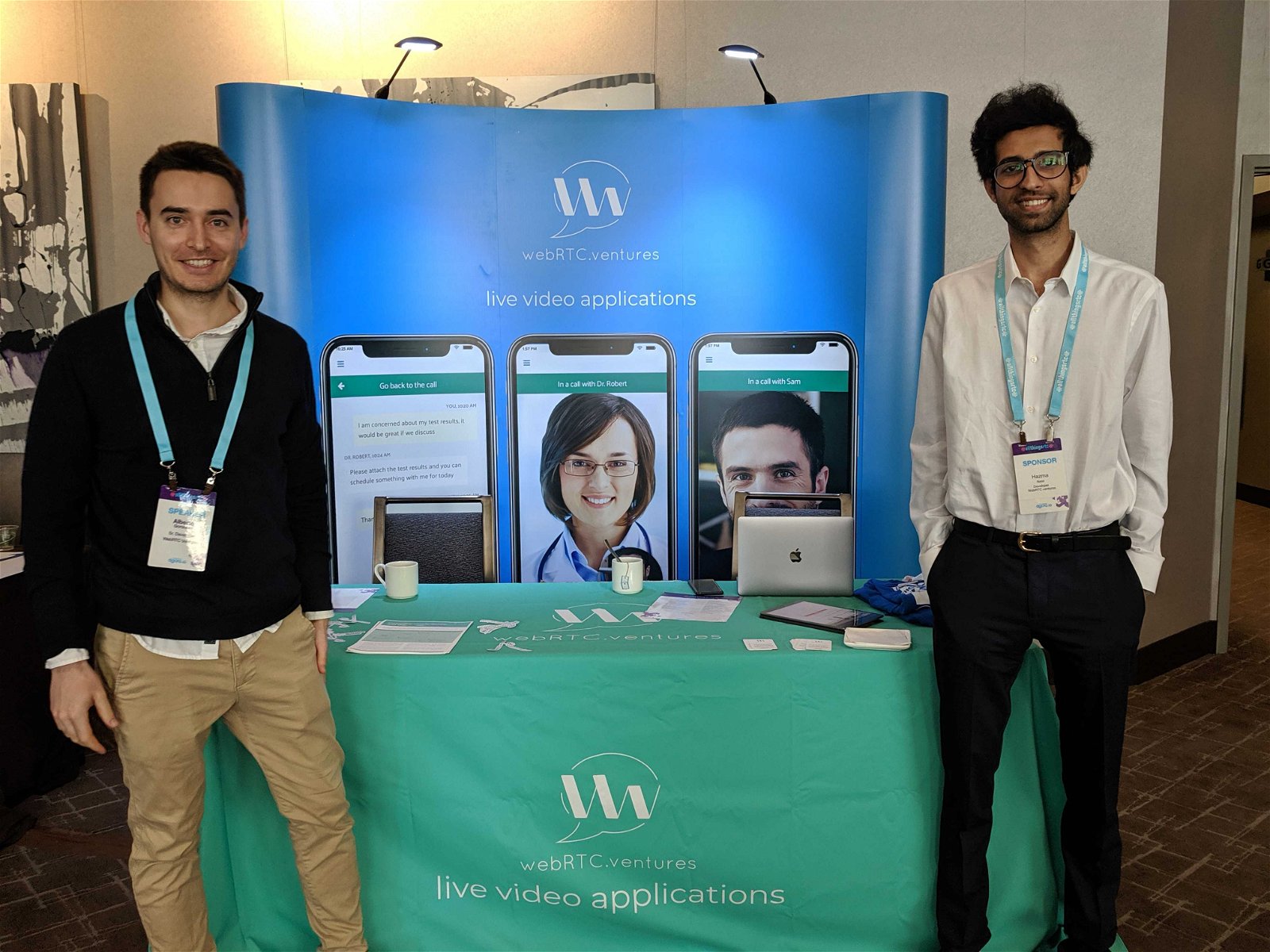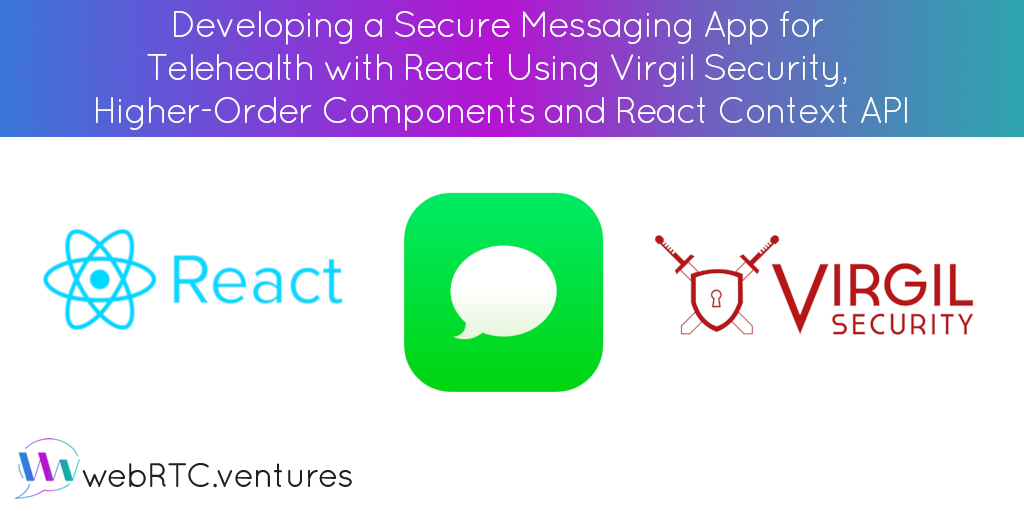July 16, 2019
Hamza Nasir
Comments Off on Integrating Health Navigator’s NLP API with WebRTC.ventures’ Telehealth Starter Kit
Integrating Health Navigator’s NLP API with WebRTC.ventures’ Telehealth Starter Kit
Last week, we took a look at natural language processing (NLP) and the various features of Health Navigator’s NLP API. Today, we'll integrate that same API with our own telehealth starter kit. Domain-level plugin Our starter kit pans out content based on domains. We'll integrate this API as a domain-level plugin so it can easily be turned on and off within each domain. Here's how this functionality looks on the admin side: With this functionality
Telehealth Starter Kit Series: Scheduled Appointments
Welcome to our telehealth starter kit blog series! For the rest of the summer, we'll focus on one feature of our telehealth starter kit in a new post each week. We’ll explain why each feature is important and how it can benefit your providers and your patients. Today, we're talking about scheduled appointments. One of the biggest advantages of using a telehealth platform is connecting patients and providers in different locations. With a webcam, microphone,
Introducing Our Telehealth Starter Kit Blog Series!
We've been talking a lot about telehealth and our telehealth starter kit lately. That's because we see immense value in using WebRTC for telehealth and in leveraging our WebRTC expertise to make healthcare more accessible for everyone. We are excited to launch a blog series about our telehealth starter kit! Starting tomorrow, we'll focus on one feature of our starter kit in a new post every week. We'll explain why each feature is important and
Using Natural Language Processing to Diagnose Patients
Natural language processing (NLP) is a revolutionary technology that allows users to communicate and interface with a computer through the most natural and efficient means known to mankind: speech. NLP uses core concepts from computer science and linguistics to break down sentence structure and categorize words into the eight parts of speech. The computer then uses models such as trees to comprehend the meaning behind each sentence. “Who is Doctor Who?” could confuse the computer
Speech to text in the browser using WebRTC
Rafael Viscarra, one of our engineers, wrote a blog post about using WebRTC to build features like speech to text. These commonly requested features require large amounts of engineering resources, but Rafael found a great way to help with that! Check out Rafael's blog post to learn about the Pion WebRTC library. Keep an eye out for more WebRTC tips on his blog soon!
WebRTC Status in 2019
The second quarter of 2019 has ended and we are now in the second half of 2019. Following the example of our good friend Tsahil from BlogGeek, we think it's is a good time to talk about the current status of WebRTC. WebRTC 1.0 specification is not final yet. Despite being widely used with several products, including Discord, Google Meet, and Facebook Messenger, WebRTC is not a perfect technology. As of this post's publication, there
TADHack Global to be held next to 2019 IIT RTC Conference
TADHack is a group of global hackathons around leading technologies like WebRTC, telecommunications, Internet of Things, and more. The WebRTC.ventures team has participated in many different TADHack events, so we’re excited to see them leading another major hackathon from Chicago this fall at the Illinois Institute of Tech’s (IIT) Real Time Communications (RTC) conference. WebRTC.ventures CEO and founder Arin Sime is chairing the WebRTC track at the IIT RTC conference this year, which will be
June 25, 2019
Hector Zelaya
Comments Off on 6 Advantages of Using WebRTC for Your Telehealth Application
6 Advantages of Using WebRTC for Your Telehealth Application
There are multiple options for adding real-time capabilities to a telemedicine solution. Let's talk about 6 advantages of using WebRTC for your telehealth application instead of a technology that requires downloads. Instant Communication One of the most important aspects of a telehealth solution is the ability to connect patients and providers quickly. This is not always possible when using technology that requires downloads because new users must spend time downloading and installing the necessary software. With
The Future of Medicine Lies in Telehealth
It's easy to see how telehealth improves access to health care. With the ability to tune in from any internet-connected device, people can meet with their medical providers quickly and easily. Telehealth makes medical appointments more convenient by eliminating commute times, transportation costs, and geographic limitations, making health care more accessible to everyone. Telehealth brings the same quality of service to a more convenient location. When most households have a computer and an internet connection,
3 Methods for Connecting a Phone Call to Dialogflow
Emiliano Pelliccioni, one of our engineers, helped Chad Hart, analyst and consultant at cwh.consulting, write an article for cogint.ai. In the article, they analyze different methods of connecting Dialogflow to the PSTN. This is the first of a series of articles which will cover a real-life Dialogflow use case. Check out the first one here and be sure to come back and read the others that follow!
AllThingsRTC 2019
Last week, WebRTC.ventures was invited to the AllThingsRTC 2019 conference hosted by Agora.io in San Francisco! AllThingsRTC is a new Real Time Communications conference that brings together more than 300 RTC experts and enthusiasts from the US and beyond. The conference featured leaders, developers, and partners dedicated to real-time communications. Alberto and I attended the conference together, and we are excited to share with you what we learned. Conference Tracks The conference had two main
June 11, 2019
Hector Zelaya
Comments Off on Developing a Secure Messaging App for Telehealth with React Using Virgil Security, Higher-Order Components and React Context API
Developing a Secure Messaging App for Telehealth with React Using Virgil Security, Higher-Order Components and React Context API
The most important thing to keep in mind when developing any kind of communications platform is security. This is especially important when processing PHI, or protected health information, because HIPAA requires this information to be secured in-transit and at-rest. Today, we'll learn about a tool from our partners at Virgil Security that allows us to secure PHI. We'll also take a look at the React Context APR and higher-order components for the React's ecosystem. Overview
Thoughts on “Sprinkles of Functional Programming”
At RailsConf 2019, we attended an interesting lecture called “Sprinkles of Functional Programming.” WebRTC Ventures aims to use the best approaches for our solutions, so I was excited for this lecture. The lecture discussed two concepts: object-oriented and functional programming. Object-oriented programming is a style that allows programmers to translate the behavior of things in real life to code that is understood by a computer. This presents concepts like class, object, inheritance, encapsulation, abstraction, and
May 28, 2019
Hector Zelaya
Comments Off on What WebRTC Couldn’t Do Then But Can Do Now: The Road to “Plugin-Less”
What WebRTC Couldn’t Do Then But Can Do Now: The Road to “Plugin-Less”
Back in 2016, our founder discussed the three things WebRTC can't do. At the time, we were receiving several questions from our customers about the use of plugins, so we wrote a blog post about the limitations of this young technology. Since then, the technology has significantly evolved. Here is the road to "plugin-less:" the things WebRTC couldn't do then but can do now. WebRTC is not completely plugin free Three years ago, among major
Nexmo @ RailsConf 2019
Context RailsConf 2019 took place a few weeks ago, and we were there to learn about the new stuff in this popular web framework. One of the many great announcements is a new Ruby gem that allows us to interact with the Nexmo API that provides SMS, voice, and phone notifications. In their announcement, they said, “The Nexmo Rails gem performs another integration step for you by initializing a Nexmo client instance and making it
The Technology Behind Telehealth
Telehealth has made enormous contributions to improve the delivery of health services around the world. Today we’ll take a look at the technology that makes it possible. Real-Time Communications (RTC) Real-time is a form of communication in which information is transmitted instantly under low-latency conditions, like in a typical conversation between two people. A common example of this is a phone call. Real-time communication can be either half-duplex or full-duplex: Half duplex is when communication
May 3rd RealTimeWeekly #279
Real Time Weekly #279: May 3, 2019 Welcome to Real Time Weekly! In this issue we've got several tutorials to build real-time text chats apps, group video chats, broadcasting apps, and more. We want to announce that we're going to pause this newsletter for a while. Sometimes it's a good practice to stop and meditate about what we've learned so far as a community in order to create an improved version of ourselves. You can always contact us
April 28th RealTimeWeekly #278
Real Time Weekly #277: April 22, 2019 In this issue we've got a tutorial about connecting WebRTC and PSTN with OpenTok and Nexmo, another tutorial to compile the native WebRTC source code, a guide to to set up Twilio Elastic SIP Trunking, and more! If you want to publish blog posts here, propose new topics, or just want to say hello, write me directly at german@webrtc.ventures. How To Compile Native WebRTC Library from Source for Android Aris R
April 24, 2019
Alberto Gonzalez
Comments Off on Survey: Calling All WebRTC Developers – Your Input is Needed!
Survey: Calling All WebRTC Developers – Your Input is Needed!
Last year, we sent out a survey asking you to share your experiences and challenges as a webRTC developer and were astounded by your response. Some of the survey results were as follows: Industries that are building WebRTC apps: Online Education– 17% Telehealth– 17% Video Chat/Social- 15% Customer Contact– 13% Field Services- 10% Remote Experts 13% What is your biggest challenge with your WebRTC app? Reliable connection Knowledgeable developer support/hiring Quality of service Testing We'd like to learn
April 22nd RealTimeWeekly #277
Real Time Weekly #277: April 22, 2019 In this issue we've got content from Pusher, an overview of WebRTC architectures from Bloggeek, PubNub, Twilio, and a tutorial from hasura.io about the 3factor architecture! If you want to publish blog posts here, propose new topics, or just want to say hello, write me directly at german@webrtc.ventures. Add chat functionality to your iOS ticketing app Pusher Apr 9th A step by step tutorial of how to integrate and use Pusher Chatkit

